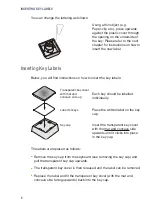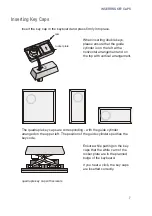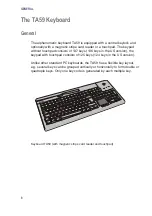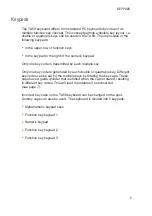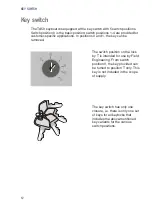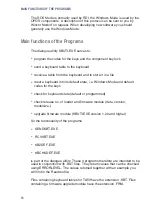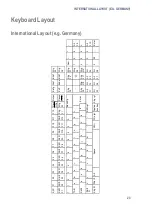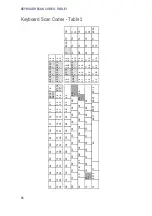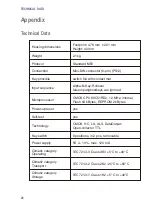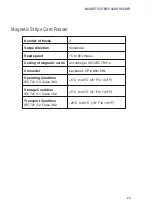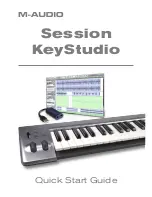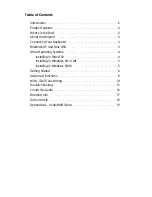
n
{Ctrl+F5}
n
{Shift+F8}
n
{Alt+F1}
n
{Alt+#123}
n
{Ctrl+f}{Alt+#240}
For a number of codes symbolic names are available, like F1, .., F12, Shift,
Ctrl, Alt, AltGr, Enter, Return, Left, PgUp etc.
Specification of codes not only may be done in symbolic form like above,
but also as hexadecimal 8042 scan codes. This, however, is only in a few
cases required and will make sense.
Specifying hexadecimal scan codes should be avoided at all, unless there
are good reasons. A specific knowledge of their structure and all their
details is required.
Before programming the following is to be defined:
n
Target keyboard TA59 (can not be changed later)
n
Type of level selection (none, POS Shift, Ctrl/Alt/AltGr,
Caps-Lock/ScrollLock)
Specification of the keyboard language is required to allow the keyboard to
deliver such codes, that can be interpreted later correctly by the language
keyboard driver for the rsp. country. The target configuration is important,
not the configuration at the time when the table is created.
For the position of the key lock, header and trailer codes can be
programmed. This allows the application to distinguish those from normal
key strokes.
The codes assigned can be viewed key by key (also with Autoincrement)
with the help of KBUTI.EXE. They also can be shown in a more compact
form on the screen or for documentation purposes can be written into a file
with extension .TXT or directly be sent to a printer (LPT1).
CREATING TABLES WITH KBUTI.EXE
20

